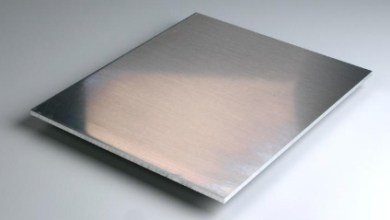How to Prepare Your Vehicle for Hail Season

Hailstorms arrive without warning and can strike during any season in many parts of the country. One minute, you are enjoying a clear day. The next minute, you may be dealing with dozens of dents, cracked paint, or even shattered glass. Yet many drivers put off preparing until it is too late. That decision can lead to costly repairs, headaches, and drops in resale value.
Tips To Help You Protect Your Car Before A Hailstorm
The best time to protect your vehicle from hail damage is before the first signs of a storm. Taking a few precautionary steps now can help you avoid serious repairs later. Additionally, consulting auto hail specialists early on after a storm strikes promises better outcomes as compared to delaying repairs.
Below are simple, effective actions you can take to shield your car before hail strikes. Keep in mind that taking early precautions ensures you are not caught off guard and helps avoid unnecessary costs and downtime later.
- Park Under A Covered Or Secured Shelter Whenever Possible
Sheltering your car is the most direct way to prevent hail damage. Garages, carports, or solid-roofed structures offer far better protection than parking in open spaces.
But if your daily route does not allow for covered parking at all times, consider planning alternate routes or routines during high-risk months to ensure your vehicle stays protected when hail is forecasted.
Even if a storm never arrives, building the habit of parking under cover prepares you to act fast when conditions turn dangerous. Remember, most hail events come with very little notice.
- Use A High-Quality Hail Protection Car Cover
A durable, impact-resistant cover can significantly reduce surface damage caused by hailstones. These covers are specifically designed to absorb the energy from falling hail and strive to protect both the paint and the body panels underneath.
Unlike basic waterproof tarps, which offer little more than rain protection, hail-resistant covers often include thick padding, typically made from EVA foam, gel-infused materials, or layered fabric composites. These are specifically tested to withstand impacts from hailstones of various sizes.
When you go looking for such covers, make sure to bring home multi-layered covers with reinforced stitching and non-abrasive linings. The interior should be soft enough to prevent scratching, while the outer layer should have enough density to absorb and distribute impact force.
Some high-end covers even come with inflatable or air-pocket designs that create a cushion between the car and falling debris.
- Monitor Local Weather Alerts Regularly
Staying informed about upcoming weather conditions is one of the simplest and most effective ways to protect your vehicle from hail damage. Hailstorms rarely happen in isolation and are usually part of broader severe weather systems that can be forecasted in advance.
By regularly checking local weather alerts, you gain valuable lead time to move your vehicle to a safe location or apply protective measures.
Start by setting up real-time notifications from trusted sources. Apps from national services like the National Weather Service (NWS) or AccuWeather allow you to receive automatic alerts for hail warnings, storm watches, and severe thunderstorm activity in your area.
A large number of these platforms also include radar tracking and push notifications that update as storm paths shift.
You can also opt into local SMS alert systems, which are often provided by regional emergency management agencies. These alerts are especially useful when you are driving or not actively checking your phone for updates.
In some regions, television and radio broadcasts may also break in with emergency notices when large hail is expected.
- Prepare A Safe Parking Strategy At Home And Work
There are a lot of people who rely on habitual parking routines, not realizing that their usual spot might be highly vulnerable during a hailstorm. Evaluating your most frequent parking areas, such as those at home, at work, and even at places you visit regularly, can help reduce your vehicle’s exposure to the elements.
At home, this might mean clearing clutter from a garage or carport to make room for your vehicle during hail season. If you do not have a permanent covered space, consider investing in a temporary canopy or car shelter with a strong frame and weather-resistant covering.
These can be secured to concrete or level ground and offer an effective shield against hail when properly anchored.
Workplace parking also deserves attention. Numerous offices and commercial buildings have covered parking options that are either reserved or available on a first-come, first-served basis. If you are not currently using one, inquire with your employer or building management to see if an upgrade or relocation is possible during peak storm months.
In case there is no covered parking available on site, try to identify nearby public garages or shaded structures that you can access during storm alerts.
- Practice Storm Readiness With Family Or Co-Drivers
If others regularly drive or park your vehicle, make sure they also understand your hail prevention routine. A quick reminder about where to park during storm alerts or how to use the cover can be the difference between a protected car and a costly repair.
People generally assume a one-time conversation is enough, but habits under pressure matter. Build the same readiness in your household or carpool as you would for any seasonal hazard.
Why Hail Readiness Is Necessary
Hailstorms cause billions of dollars in vehicle damage each year, often with very little warning. Even smaller hailstones can dent body panels, chip paint, or crack windshields, leading to lower resale value and long-term structural concerns.
Being prepared before the season begins reduces your risk significantly. Hail readiness offers the following benefits.
- Hail can fall with little warning, especially during fast-moving storms. Having your car sheltered or covered in advance gives you the best chance to avoid impact altogether.
- Small dents may not seem urgent, but as time passes, they can break paint seals. This allows moisture to seep in and start corrosion beneath the surface.
- When you prepare in advance, you can act quickly after a storm. Faster reporting and less severe damage often lead to smoother, faster claim resolution.
- Cosmetic condition affects how your car is perceived, even if it runs perfectly. Vehicles without dents or faded panels typically command higher prices and sell faster.
- If you have a plan in place, you are less likely to panic when forecasts look serious. Knowing your car is protected helps you focus on safety instead of damage control.
Final Thoughts
Hail season may be unpredictable, but your response to it does not have to be. Taking a few deliberate steps, like planning safe parking, monitoring weather alerts, and using the right protective tools, can help prevent costly damage before it happens.
The goal is not to guess when hail will strike, but to stay ready throughout the season.
Relying on expert advice and preparing ahead of time means you are less likely to face unexpected repairs, insurance complications, or reduced vehicle value. What may seem like a minor adjustment to your daily routine now can save you time, stress, and money in the months ahead.






